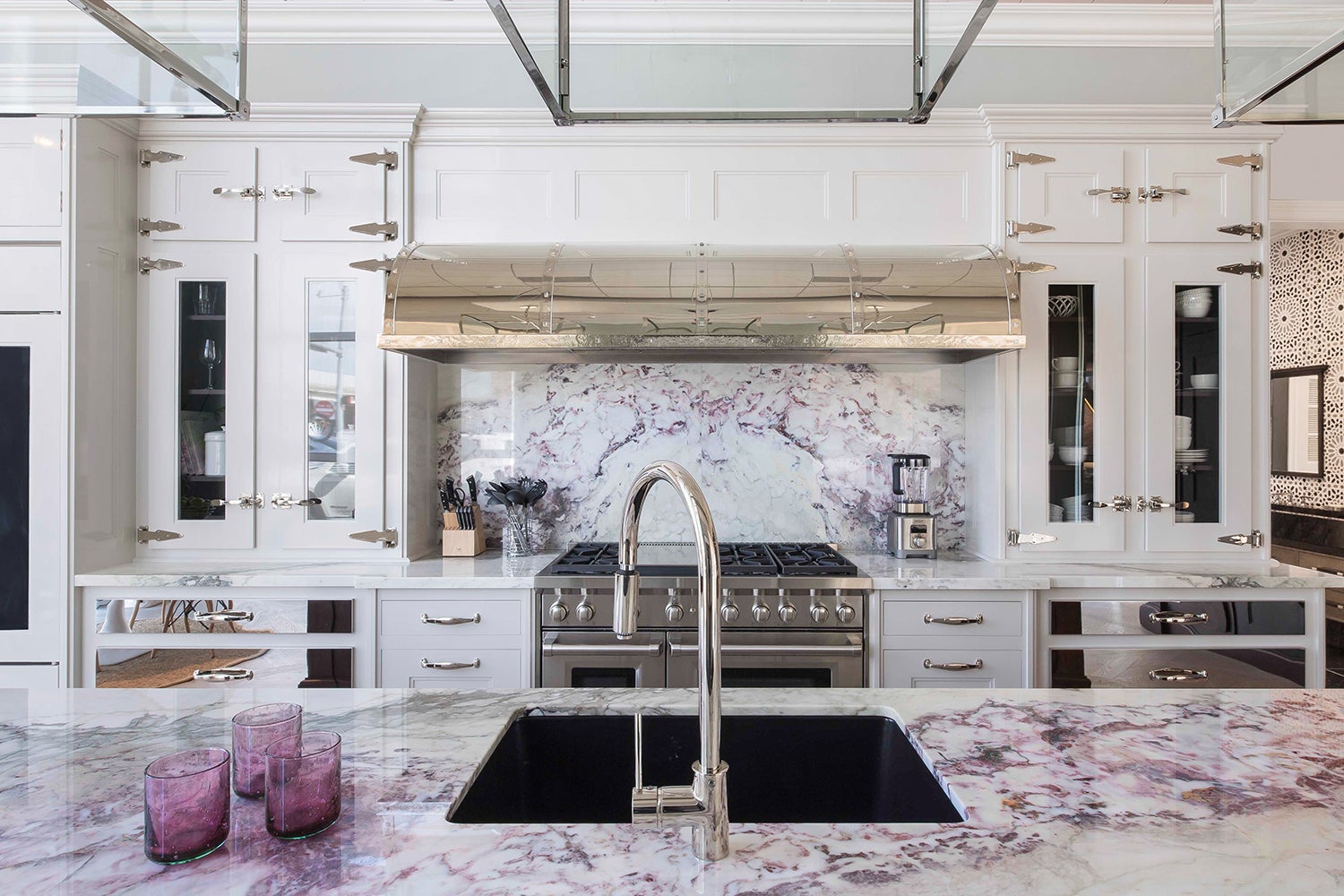Communicating your vision is no small task. Whether you’re tackling a whole home or just sprucing up a corner nook, it’s crucial to present a design clearly to ensure the rest of the project runs smoothly. We asked five industry pros—Tatiana Seikaly, Gianpiero Gaglione, Christopher Peacock, Grey Joyner and Davina Ogilvie—to share how they approach their design presentations.

Step by Step
“For most people, it’s difficult to envision the before and after of a renovation. I always start with the floor plan because understanding the proposed layout is the most difficult aspect, yet it’s so important. After that, we move on to 2D elevations and material selections. Next, we move on to the 3D models or realistic renderings. After the drawing set is completed, we begin presenting the decorative elements. My presentations are a visual representation of the proposed design, walking the client through each room and depicting how it will look and feel—this ensures there are no surprises after installation.” —Tatiana Seikaly, Studio Seikaly, Miami

Start With the Story
“Overall, the goal of the presentation is to set the tone and answer as many questions as we can without driving the project too far. The first few slides are where we set the design narrative, which is often described with a short written description accompanying some imagery that evokes the spirit of the words. We then review the overall plan and some light sketches to show big-picture moves, layout, how each of the spaces connect, etc. This leads us to [present the] inspiration imagery for each unique area, like the bar, for example. A 3D sketch of the bar shows how the inspiration images will be interpreted in the space. Following this, we review furniture and lighting selections and materiality (fabrics, stones, tiles, wood color, etc.). Once this initial concept presentation is approved, we can move to the next phase in the design process. It might seem like a lot to present, but I don’t like my clients to get any surprises, and ultimately, this results in clients who are happy and aware of what they’re getting.” —Gianpiero Gaglione, GG Interior Design, Los Angeles

Show(room) & Tell
“We always present to our clients in one of our showroom locations and use our cabinetry displays to demonstrate and articulate the ideas we present on paper. Plotted drawings allow us to freehand sketch, modify and convey an idea easily. Along with our plans and detailed elevations, we also gather material and finish selections.” —Christopher Peacock, Christopher Peacock, New York

Back & Forth
“I put together an initial presentation after a budget is determined, and the client has offered me answers to the following questions: favorite colors, why they selected me for the project, [existing] items that they do or don’t love, their family and how they live, things they’ve always wanted in their home and the history of the house. Based on this information, and the measurements of each space we will be focusing on, I typically put together two to three different layouts with color schemes, inspiration imagery, possible furniture selections and even fabric types. The selected direction is just a starting point, but I find that offering too many options at first can be overwhelming and confusing for clients. Once we are pointed in a direction that everyone is comfortable with, we fine-tune everything further and home in on more specific design details and materials.” —Grey Joyner, Grey Joyner Interiors, Wilson, North Carolina

Ahead of the Curve
“There is a lot of important education [that goes on] with our clients. While it’s helpful to share beautiful inspirational imagery [during the presentation], we make sure to also go over the logistical aspects of the design. For window treatments, that can be what the lining options are, what a Roman shade looks like from the back and how the lift mechanism works. These are seemingly boring details that are crucial to communicate to ensure the client ultimately receives something they are expecting and happy with.” —Davina Ogilvie, Wovn Home, New York
Homepage image: On-site at Christopher Peacock’s Dallas showroom, where his presentations take place | Courtesy of Christopher Peacock Cabinetry





























